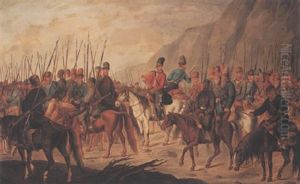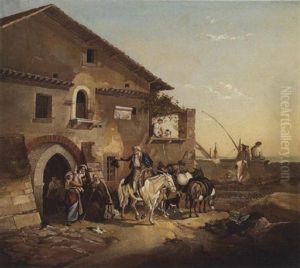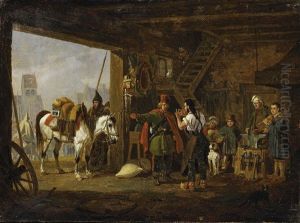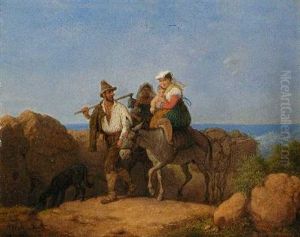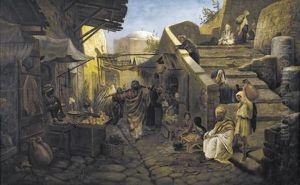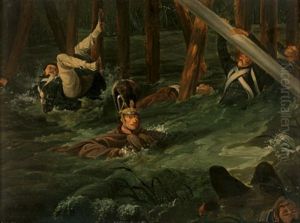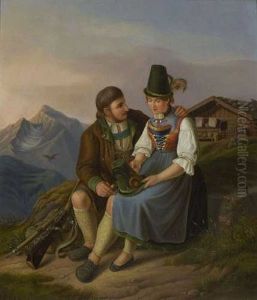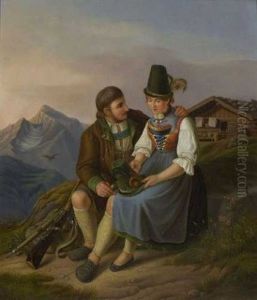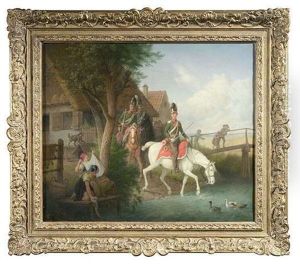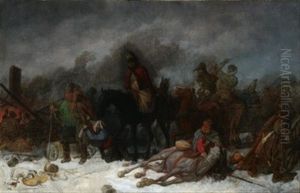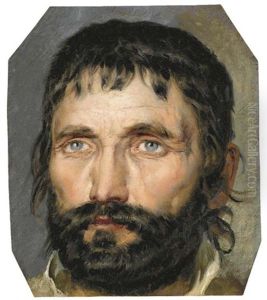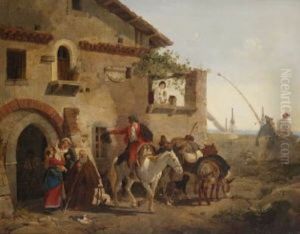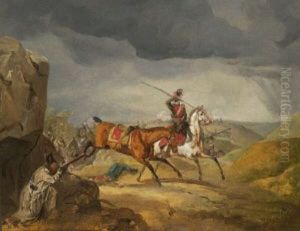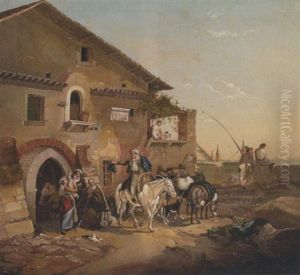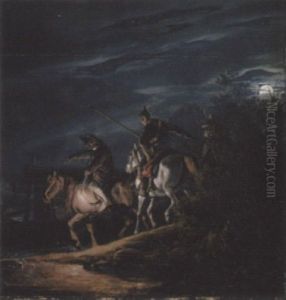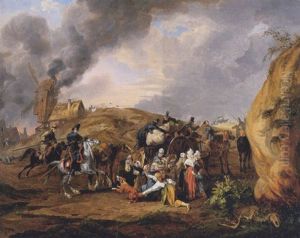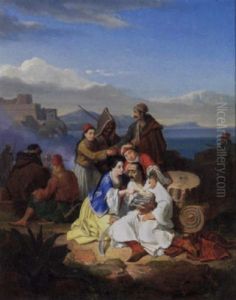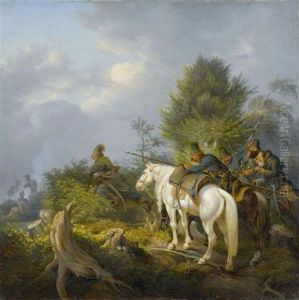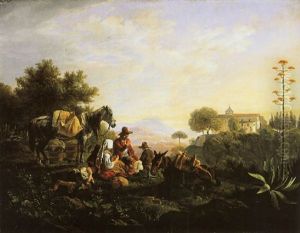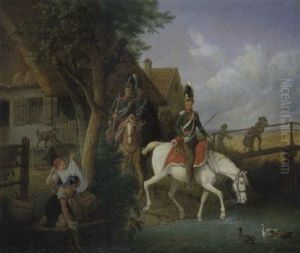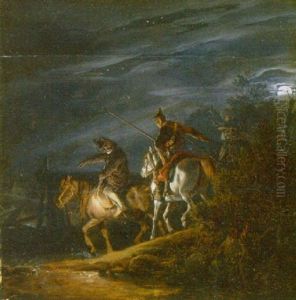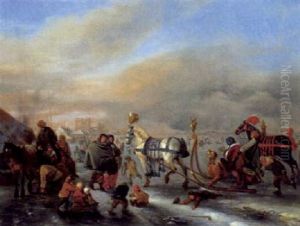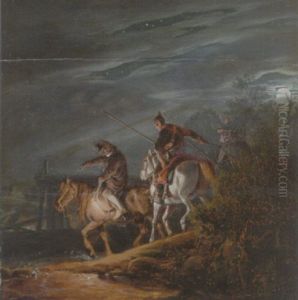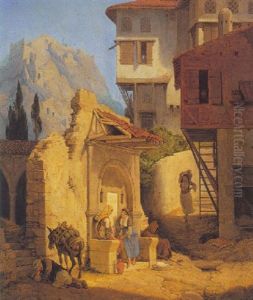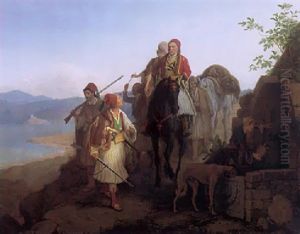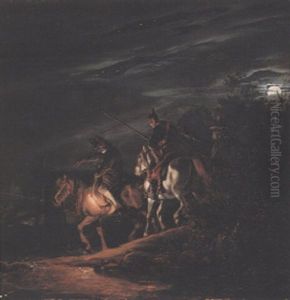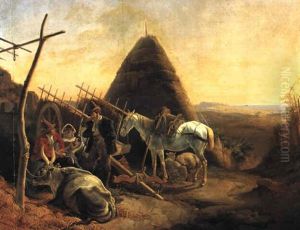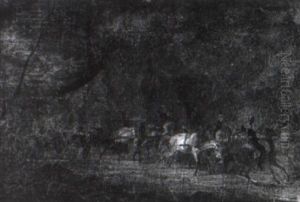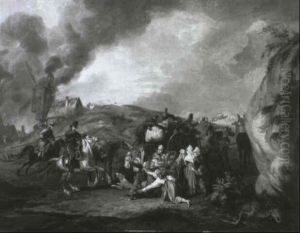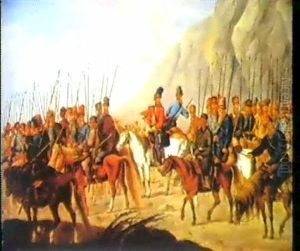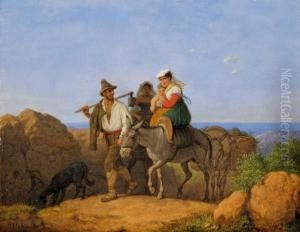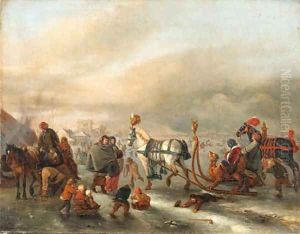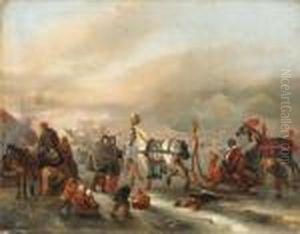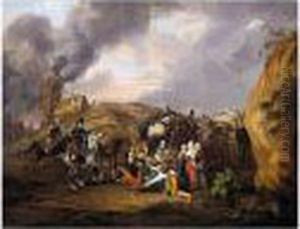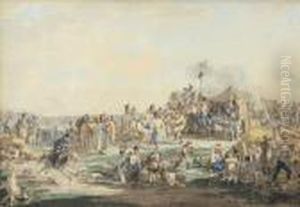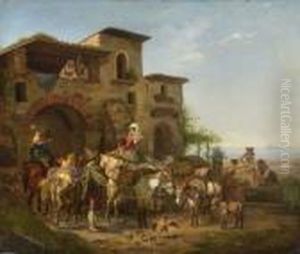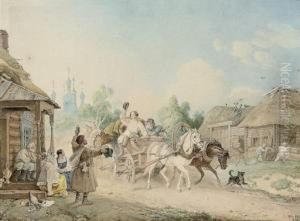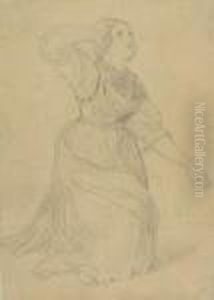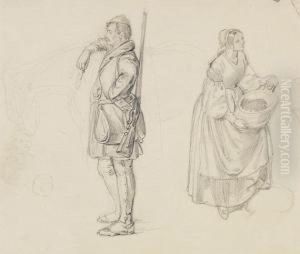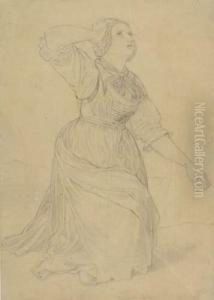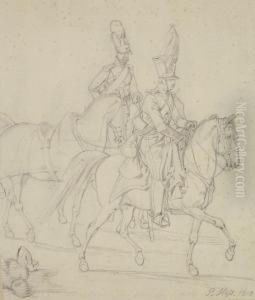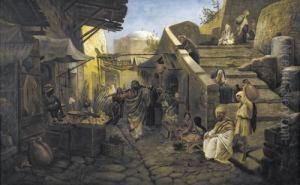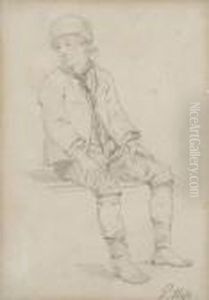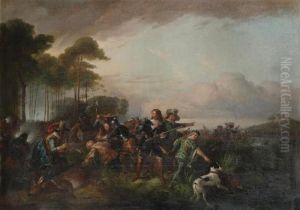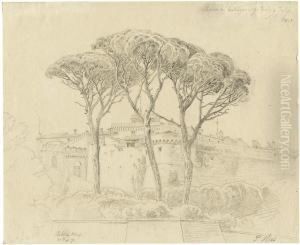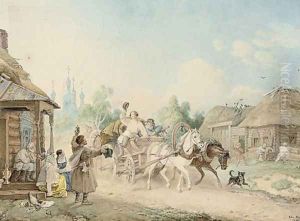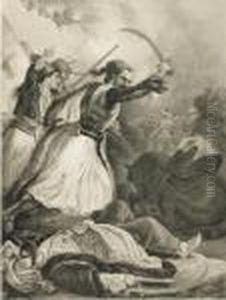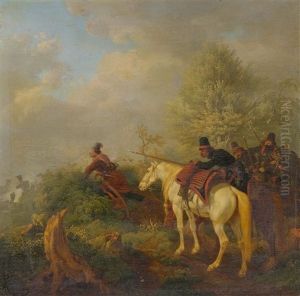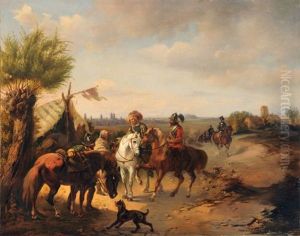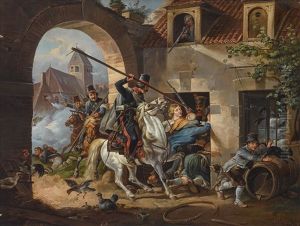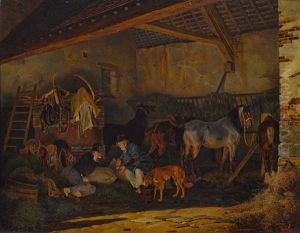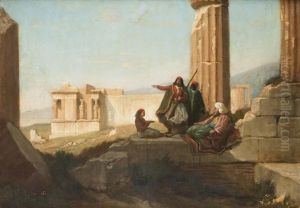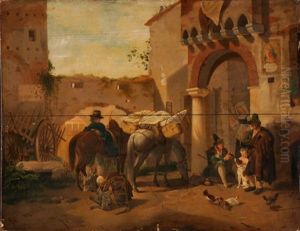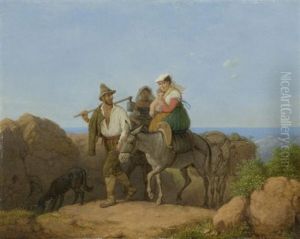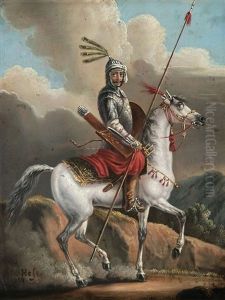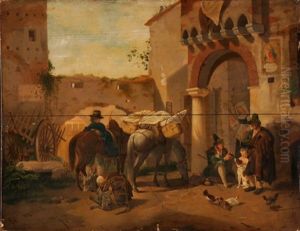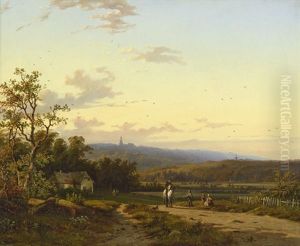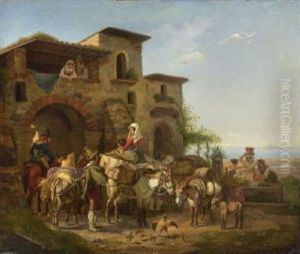Peter Heinrich Lambert Von Hess Paintings
Peter Heinrich Lambert von Hess was a German artist, born on January 14, 1792, in Düsseldorf, Germany. He is best known for his work as a genre and battle painter. Born to a family of artists, his father Carl Ernst Christoph Hess was also a painter, and this environment fostered his artistic development from an early age.
Von Hess initially received training from his father and later attended the Academy of Fine Arts in Munich, where he studied under several prominent artists, including Peter von Cornelius, who was one of the leading figures of German Romanticism and a central figure in the Nazarene movement.
While his early work focused on religious subjects and portraits, von Hess soon developed a keen interest in historical and battle scenes. His talent was recognized by the Crown Prince Ludwig of Bavaria, who became King Ludwig I, and who commissioned von Hess to document the Greek War of Independence, which took place between 1821 and 1832. This commission led to von Hess traveling to Greece, where he closely followed the events of the war and created a series of paintings that were both historically significant and artistically compelling. These works played a key role in shaping the European public's perception of the Greek struggle for independence.
Throughout his career, von Hess continued to receive prestigious commissions, including work for the Bavarian kings. He painted large-scale battle scenes that were celebrated for their detail and realism. His most famous works include ‘The Entry of King Othon of Greece into Nauplia’ (1835) and ‘The Battle of Navarino’ (1846).
Von Hess was also a respected teacher and influenced a number of younger artists. He taught at the Academy of Fine Arts in Munich and became an honorary member of the St. Petersburg Academy of Arts.
Peter Heinrich Lambert von Hess died on March 4, 1871, in Munich. His legacy is preserved in the form of his detailed and dramatic paintings, which continue to be admired for their historical accuracy and artistic beauty. His works can be found in various art galleries and collections throughout Europe, particularly in Germany and Greece, where his depictions of key historical events hold a special place of honor.
